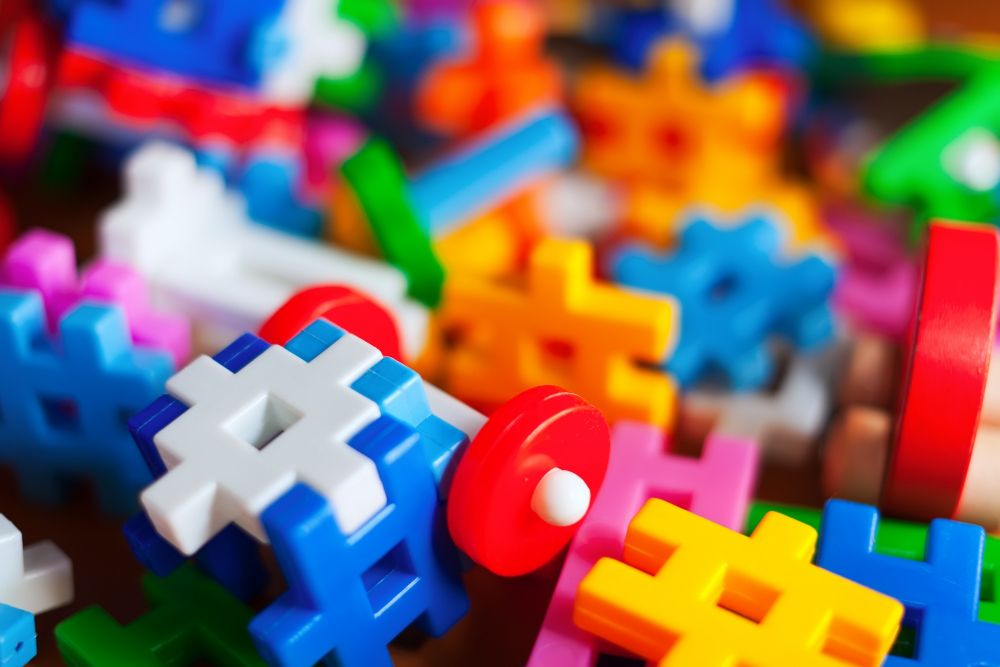
December Is Safe Toys and Gifts Month
During the season of giving, toy safety is crucial in protecting children and other gift recipients. To help remind all gift-givers to buy wisely, Prevent Blindness America has designated December as Safe Toys and Gifts Month. Parents and friends of children can take steps to facilitate safe gift-giving this season by making sure the toys they buy for young ones are appropriate and safe.
The Importance of Safe Gift-giving
According to the U.S. Consumer Product Safety Commission (CPSC), emergency rooms treated about 224,200 toy-related injuries in 2019. Also, thousands of children 14 years old or younger each year suffer various forms of eye injury, including blindness, from unsafe toys.
Children can incur other types of toy-related injuries. For instance, kids can fall off bikes, skateboards, and scooters and suffer broken bones, bruises, head injuries, or cuts. Helmets, knee pads, and other personal protective equipment (PPE) can reduce or prevent injuries when falls happen. Choking is another common hazard, especially with small, removable components. Children can swallow parts and suffer reduced breathing or suffocation.
The CPSC has established standards for toy safety requiring testing by independent entities worldwide. These standards also include strict limits on lead and phthalates in toys. While they are crucial, manufacturing regulations are not enough to keep children safe. Parents, caregivers, and gift-givers must understand the potential hazards, whether these are part of the product or the packaging.
Checklist for Buying Safe Toys
Whether you’re buying gifts for your child or someone else, choosing a safe toy or gift starts with the recipient:
- What toys are appropriate for their age?
- Do they have allergies or skin sensitivities?
- Do they have sensory issues that make some toys unfit (loud noises, flashing lights)?
- Are they physically and cognitively able to use the gift?
- If the toy is for outdoors, does the recipient have adequate space to use it?
Inspecting any toy or gift before buying it is crucial to ensure safe use and storage. During a careful inspection, keep the following tips in mind when buying for a child:
- Avoid presents with sharp edges, points, or spikes.
- Do not purchase crayons or markets without a clear “nontoxic” label.
- Ensure the product has the American Society for Testing and Materials (ASTM) approval seal.
- Avoid toys with shooting parts that can choke or cause injury, especially for children less than three years old. By the way, BB guns are not toys.
- Steer clear of toys that could shatter or break into small debris upon impact. This also includes products that a child can pull apart easily.
- Include a helmet or other PPE if buying sports gear.
- Avoid toys with heating elements, ropes, or cords.
- Children young enough to put things in their mouths should not receive anything with magnets or buttons, which can be dangerous upon ingestion.
- Any item with removable parts that can fit inside a toilet paper roll poses a choking hazard.
- Ensure the toy is devoid of lead paint or any lead-based substances.
Checklist for Parents and Caregivers
It might go without saying to read all instructions and warning labels before your child plays with a new toy. If someone else bought them the gift, remember to do a thorough inspection to ensure the item has a solid construction and is age- and ability-appropriate. Even if you determine that the toy is safe, there are steps to ensure safe use:
- Immediately discard wrapping and packaging.
- Show your child how to use the toy safely.
- Keep a close watch on your child while they’re playing. This includes craft projects that involve scissors, glue, or other potentially hazardous materials.
- Dispose of any toy that is broken or is missing parts.
- Keep younger children from playing with toys intended for older siblings.
- When not in use, store toys so that they do not cause falls or trips.
- Make sure children use PPE that properly fits when playing with sports gear.
- Throw away damaged or deflated balloons, which can choke or suffocate. Keep them away from kids younger than eight years old.
- Ensure that only adults handle batteries and charge them because they might get hot and cause burns.
Finally, manufacturers regularly issue recalls for various faulty products. Pay attention when there is a recall for a toy or gift you own. Before you purchase, go to the CPSC website to check for any outstanding recalls. Toys and other items sometimes remain on the shelves even after a recall has been in place, especially during a busy holiday season.
Research and materials for this article were compiled, written, and distributed on behalf of the National Public Health Information Coalition. The views and opinions expressed in this blog are those of the various authors and do not necessarily reflect the official policy or position of the National Public Health Information Coalition or its members.
References

